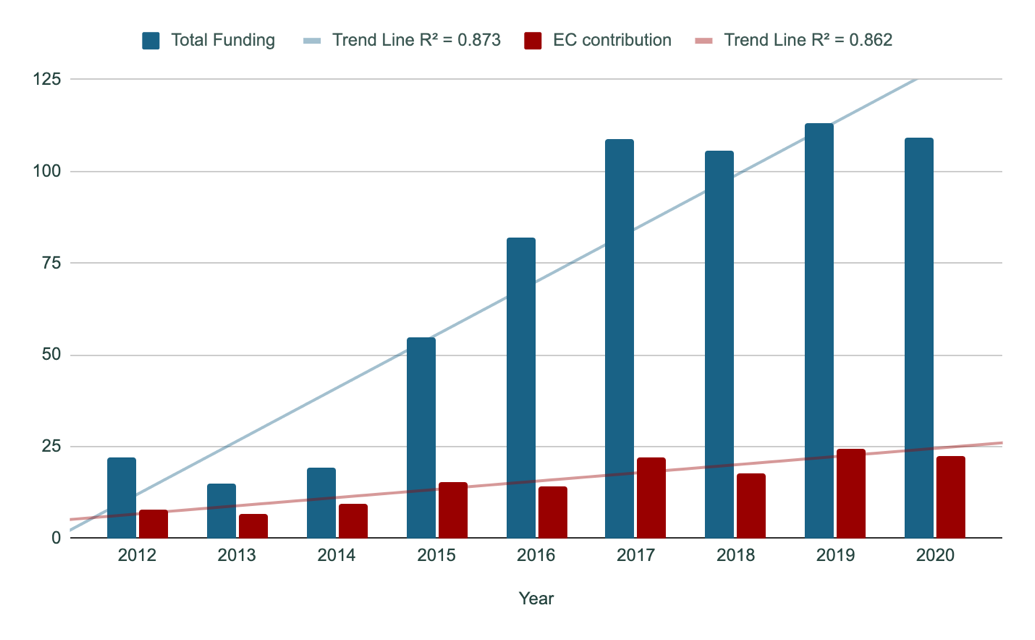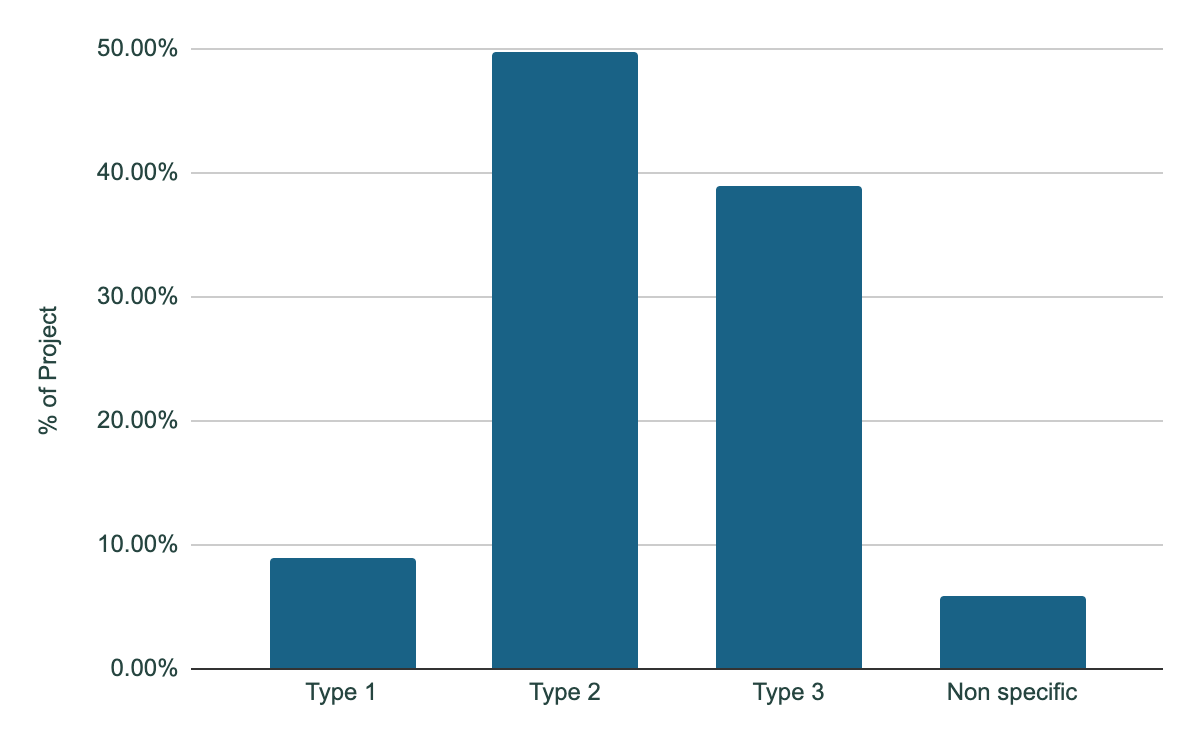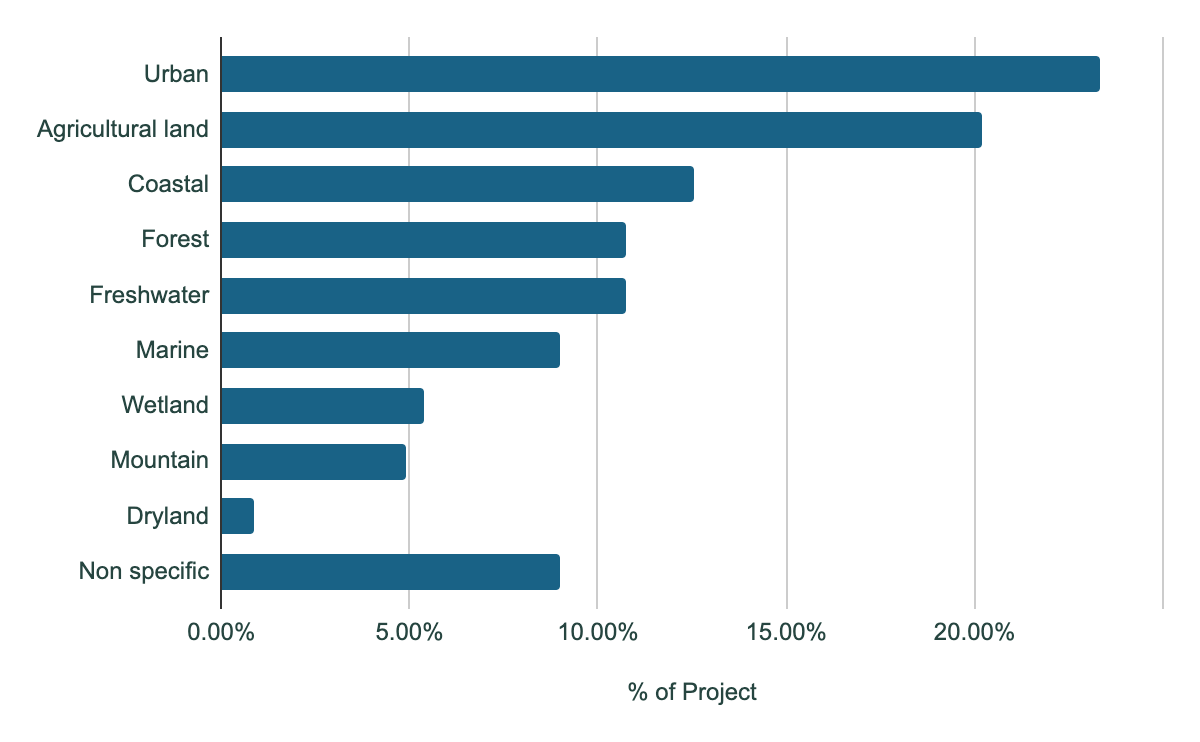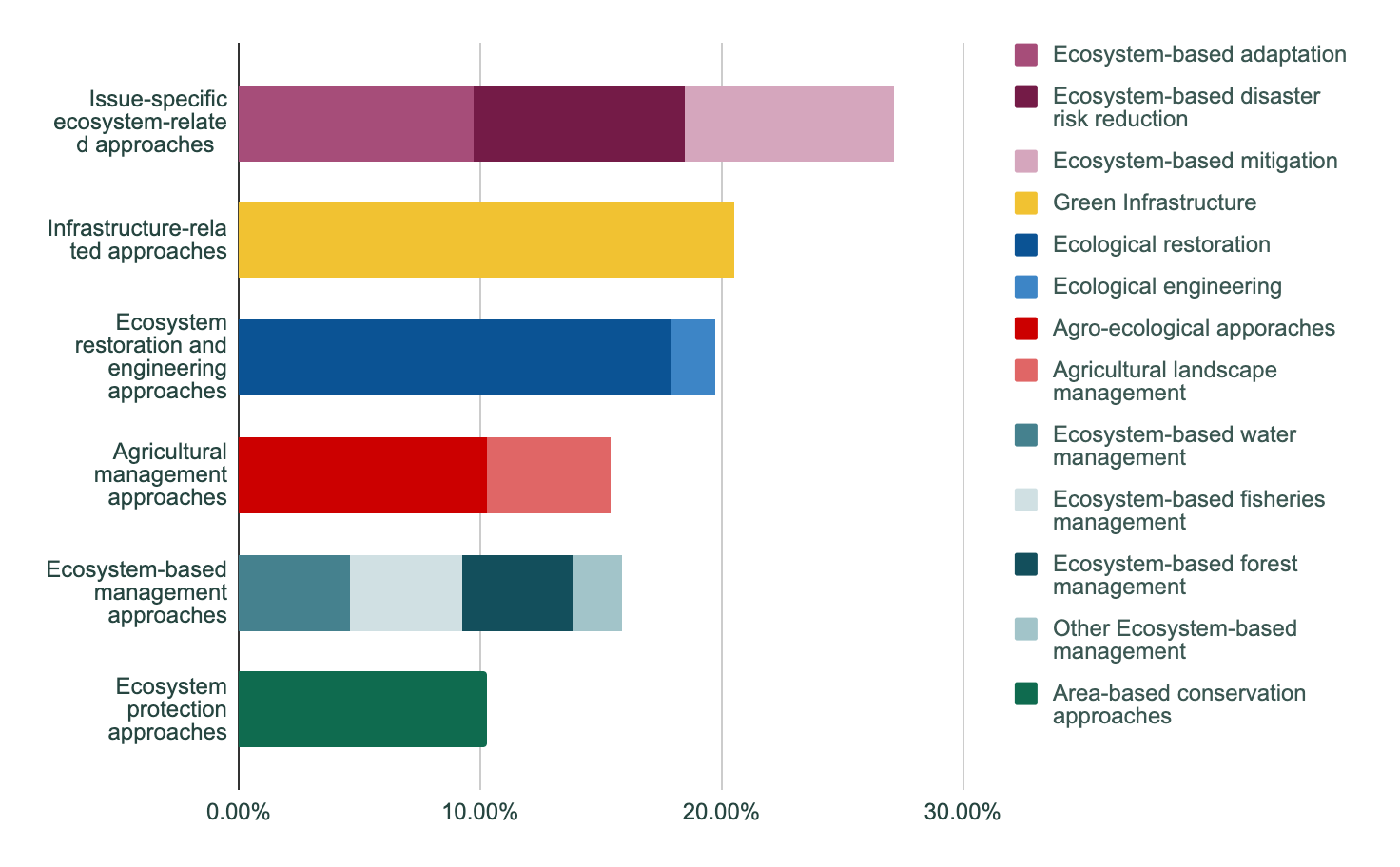The mapping of projects first revealed an increase in funding from 2011 to 2017 for NbS projects in the European programmes considered, going from fewer than 25M euros to more than 100M euros per year (Figure 1). From 2017 onward, a plateau was reached right above 100M euros per year. The same trend can be observed for the number of projects funded per year, with the number of projects tripling in 6 years and reaching about 30 projects funded per year from 2017 onward.

The database of projects was categorized using multiple typologies, allowing to derive some key findings below.
As presented in Figure 2, the most studied type of NbS in these projects are solutions based on developing sustainable management protocols and procedures for managed or restored ecosystems (type 2) with nearly 50% of all projects, followed by solutions that involve creating new ecosystems (type 3) with 39% and by solutions that involve making better use of existing natural or protected ecosystems (type 1) with 10% of projects.

Interestingly, looking at the type of environments in these projects showed that the most represented are Urban and Agricultural land, with respectively 23% and 20% of all projects, followed by Coastal and Forest environments, representing 12.5% and 11% of the projects as shown in Figure 3.

In addition, we looked into the types of approaches studied, using a typology adapted from the IUCN. Figure 4 shows that most studied approaches in these projects were issue-specific ecosystem-related approaches regrouping ecosystem-based adaptation, mitigation, and disaster risk reduction, with 27% of all projects. In these, the most considered specific approaches were Green Infrastructure and Ecological Restoration, representing respectively 20.5% and 18% of all projects

This mapping helps overall highlight interesting trends in EU-level support to R&I on NbS and shed a unique light on the profile of NbS studied at this level. These also provide a sound starting point for highlighting the respective niches and complementarities of the different programmes considered.
This work is one of the many steps NetworkNature is taking to facilitate the development of the EU R&I roadmap on NbS. If you’re interested to be kept informed or even contribute, stay tuned for announcements of opportunities by joining the NetworkNature community here .
